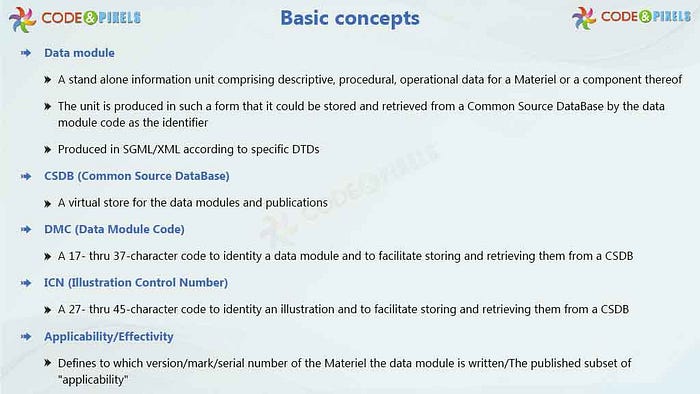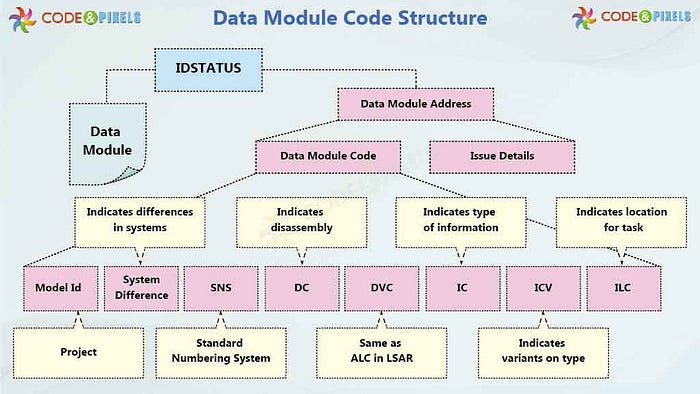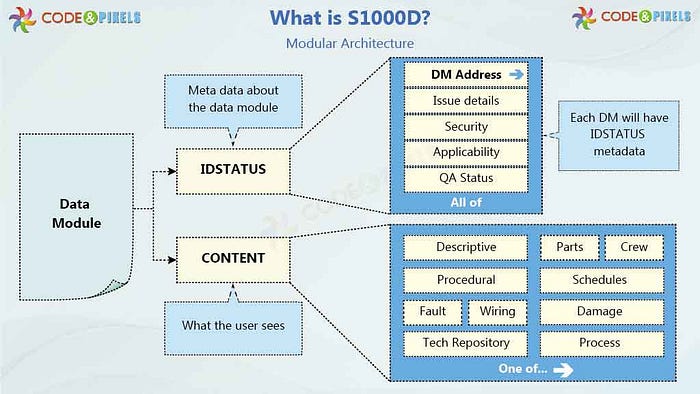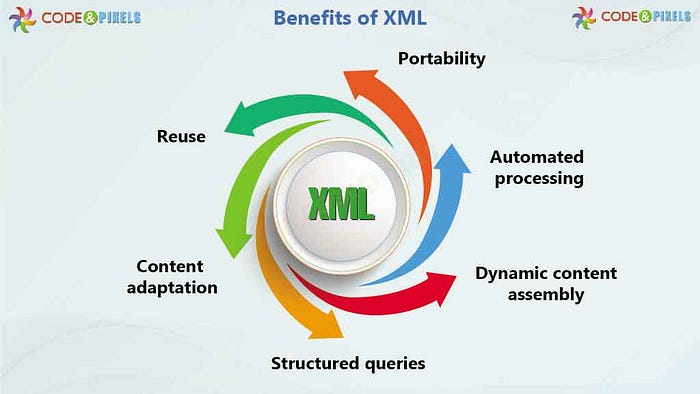A new buzzword in the technical publishing world. New word? Not exactly new, but surely it’s a new word in the Indian Defense Technical Publishing segment. S1000D is an Interactive Electronic Technical Publishing IETP. It’s also called IETM too.
" title="YouTube video player" frameborder="0" allow="accelerometer; autoplay; clipboard-write; encrypted-media; gyroscope; picture-in-picture; web-share" referrerpolicy="strict-origin-when-cross-origin" allowfullscreen>
A new buzzword in the technical publishing world. New word? Not exactly new, but surely it’s a new word in the Indian Defense Technical Publishing segment.
S1000D is an Interactive Electronic Technical Publishing IETP. It’s also called IETM too.
S1000d is not new but very few Indian companies, which support documentation of foreign Airline documentation are similar to S1000d word. But almost 90 % of the people who do S1000D conversation do not know what s1000d is.
Few tools available in the market which are used to make XML files But they are not an IETM creating tool, Just XML conversion tools. After converting to XML, they send to foreign airlines company, where they foreign airline companies plug-in theses XML into their S1000d suits.
What is S1000D
S1000D is the European standard of technical publications or technical documentation being followed in Aerospace since 1980, which uses CSDB, a Common source database which is used for preparing, managing, and publishing technical information for a warship, or Aerospace, or even Civil airlines too.
The first release of the S1000D Specification was in 1989 and in August 2019 the latest 5 Issue was release
An airplane or ship is built with thousands of components, subcomponents and navigation equipment, and many more. Hence, these components are supplied by many OEMs (Original equipment manufacturers). OEMs make the documents to their own standards. Each document and format is entirely different because all OEMs don’t maintain similar standards. At that point, the Technical Publications Specification Maintenance Group (TPSMG) was formed. They proposed a DM-based (Data Module) Based structure. TO manage these Data modules CSDB was maintained. (Database). Data Module is the standalone section of the document. For example, let’s assume that one data module is prepared on Operation of GPS and stored in CSDB, then whenever GPS operations are to be reproduced for different aircraft or different systems, simply that Data module can be copied and plugged.
In short, reusability and the format used is XML, and tags are defined by the S1000D steering committee.
S1000D History in Brief
A few years back S1000d is mainly used in the Aerospace segment, because S1000d is basically governed by Steering Committee formed by ASD, Aerospace Industries Association of America (AIA) ATA e-Business Program These organizations form the S1000D Council
Hence, it’s more apt for the Aerospace industry.
Currently, Defense systems — including land, sea, and air products, civil aviation, Ship industry of the US have adopted these standards while making documentation.
Now Indian Defense system is also trying to adopt S1000D for their documentation activities.
When Navy/IAF/Army wants s1000d IETM, it is implied that the navy has CSDB Suit /Local CSDB Server
20- 50 OEMs or Service providers will give S1000d data Modules of various systems and the Navy CSDB Local server will host them and monitor them and does the user management
If the navy does not have a CSDB suit then, still they can run IETM, but a standalone version where no user management will be done by IETM Viewer.
(User management will be done by Navy CSDB Local server which hosts all the data modules of various OEMs)
S1000D is not suitable for smaller systems. It’s very apt for the systems which have around 1 lakh pages of documentation and the project has just initiated the documentation.
Benefits of S1000D
- Reusability of data hence reduces production cost
- Standardization of data and naming conventions
- Standardization of data and naming conventions
- Good for legacy data conversion
- Proper documentation and version control management
- Zero printing cost and zero occupancies of space as no Hard copies are to be maintained. Achieved by reusing instead of recreating information each time it is required
- Easily to maintain and distribute: Facilitates transfer of information and electronic output between systems very easily and conveniently
- Multiple Vendor support
- Fastest reference to operator or maintainer than traditional paper-based documents
- Many different output forms can be generated from a single data source i.e. from CSDB we can generate IETM and also PDF format which can be used for printing if need be
- Customised Output creation: Allows sub-sets of information to be generated to meet specific user needs and user levels.
S1000D Users
Military
- Air
- Land
- Maritime
- International
Civil/Commercial
- Aviation
- Aviation
- Space
- Urban
- General technology
Others
- Manufacturer
- Integrator
- Supplier
- Suppliers of documentation
- Technical service providers
- Software vendors
Do We Need S1000D
Well, to be honest, the answer is Yes and NO. It depends on how big is your System/equipment.
S1000d mostly suits to airline industry where every part has a unique number may it be AIRBUS, BOEING BUSINESS JETS, BOMBARDIER AEROSPACE, CESSNA AIRCRAFT. Parts and part numbers are the same.
In S1000d documentation, every part is developed as a standalone module/document (data Module). While delivering a document, they compile all data modules and deliver.
And all these companies have their own S1000d suit which costs in crores.
They maintain a centralised repository. They maintain their own software which takes care of publishing, document management.
In our context, it won’t suit our needs and purpose. To maintain s1000d, even Clients must have s 1000d CSDB Studio or Server, and all the s1000d publications supplied by various OEMs/ Vendors will sit in that CSDB Server
For that client has to share BREX, business rules to vendors, and guidelines to all vendors so that all the documents will sit properly in the client’s S1000d CSDB Server
This is needed when the system has around 2 lakhs of documents to share.
And its commercially very costly solution. If, IETM costs you 20 lakhs then S1000d costs you 80 Lakhs.
If the system is very big, like documentation for the entire Ship /flight, and documentation has just been initiated, then S1000D is the best solution. Because One S1000d is made, then we can export PDFs and also IETM from the same source files.
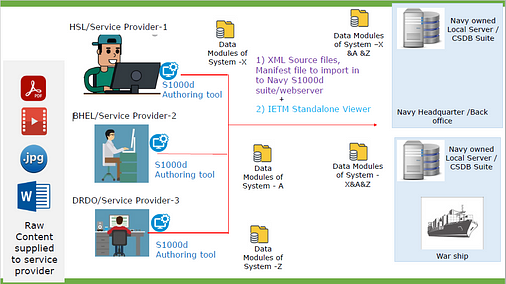
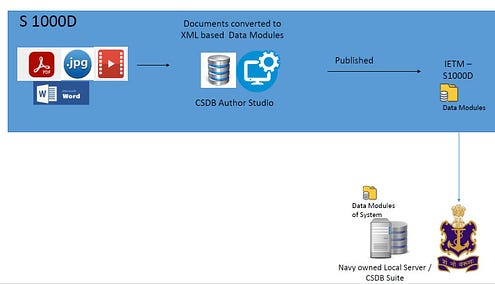
Code and Pixels and S1000D
- For the past 8 years, we have been executing IETM projects for Army, Navy, and Airforce in JSG 0852 format.
- In 2016, the first time we received an inquiry from a Dubai-based oil and gas firm. We have also come across the s1000d term in various Navy documentation meetings. we have then initiated R&D activities on S1000D Implementation and hired S1000d experts who have worked on various defense Aerospace projects.
- we have interviewed 50 members who mentioned s1000d in their profiles. We picked them from LinkedIn. They don’t even know what s1000d is. They were told that the project was s1000d, and they blindly did data entry work on the conversion of word to XML.
- We initially tried to develop software for S1000d. We later realized that S1000d is not just making Doc files into XML files. It has thousands of standards of XML tags as mentioned by S1000d documentation.
- We have searched for an organization that is already an expert in delivering S1000d solutions. After almost 6 months of evolution, we have done a technical tie-up with one of the best s1000d service provider companies. (US-based firm)
- We have executed projects in S1000d successfully.
